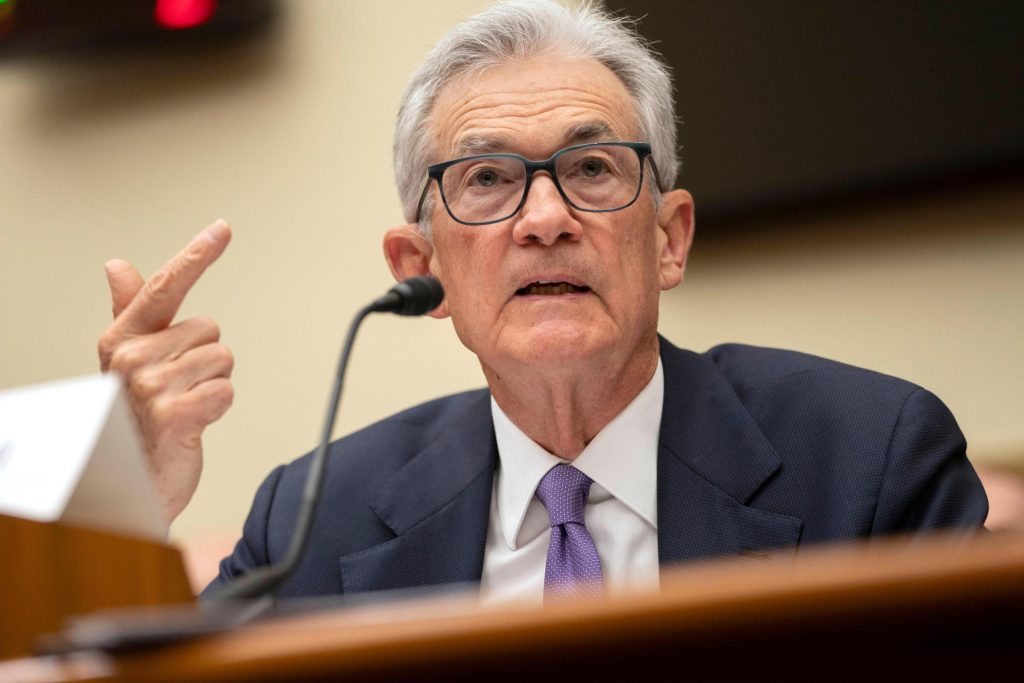Federal Reserve officials indicated on Wednesday that despite signs of high inflation at the start of 2024, they still anticipate reducing their key interest rate three times this year. However, they predict fewer rate cuts in 2025 and have slightly raised their inflation forecasts.
Following their latest meeting, the officials kept their main interest rate the same for the fifth consecutive time.
In their new quarterly projections, Fed officials predict that stronger growth and persistent inflation will continue in 2024 and 2025, leading to slightly higher interest rates for a longer period.
They now predict three rate cuts in 2025, down from four in their December projections.
They also anticipate that “core” inflation, excluding volatile food and energy costs, will reach 2.6% by the end of 2024, up from the previous projection of 2.4%. In January, core inflation was at 2.8%, according to the Fed’s preferred measure.
Overall, their forecasts indicate that policymakers expect the U.S. economy to continue with a unique combination: a strong job market and economy alongside gradually decreasing inflation, in contrast to their predictions three months ago.
Most economists believe the Fed's June meeting is the most likely time for announcing its first rate cut, which would start to reverse the 11 hikes implemented over the past two years. These hikes have helped reduce annual inflation from a peak of 9.1% in June 2022 to 3.2%, but have also substantially increased borrowing costs for businesses and households.
Over time, rate cuts would lead to decreased costs for home and auto loans, credit card borrowing, and business loans. They could also benefit President Joe Biden’s bid for re-election, given widespread public dissatisfaction with higher prices and the potential economic boost from lower borrowing rates.
Two recent government reports revealed higher-than-expected inflation. One report showed a significant jump in consumer prices from January to February, exceeding the Fed’s target. The second report indicated a surprisingly high wholesale inflation, possibly signaling inflation pressures in the pipeline, which could maintain elevated consumer price increases.
Powell and the 18 other officials on the Fed’s interest-rate-setting committee have been assessing whether these figures should impact their schedule for rate cuts. The main question is whether rates have been high enough for a sufficient period to effectively control inflation.
While consumer inflation has dropped since mid-2022, it has remained above 3%. In the first two months of 2024, service costs such as rents, hotels, and hospital stays have stayed high, suggesting that high borrowing rates were not adequately curbing inflation in the extensive service sector of the economy.
Although the Fed's rate hikes typically raise borrowing costs for big-ticket items like homes, cars, and appliances, they have less impact on services spending, which usually does not involve loans. With the economy still performing well, there is no urgent need for the Fed to reduce rates unless it believes inflation is under control in a sustainable manner.
At the same time, the central bank has a competing worry: If it waits too long to reduce rates, a long period of high borrowing costs could seriously harm the economy and even push it into a recession.
Powell cautioned about such an outcome when he spoke to the Senate Banking Committee this month. He stated that the Fed was gaining more confidence that inflation is continuing to decrease, even if not in a direct manner.
In most ways, the U.S. economy remains very strong. Employers are still hiring, unemployment is low, and the stock market is at record highs. However, average consumer prices are still much higher than before the pandemic — a source of dissatisfaction for many Americans, for which Republicans have tried to blame Biden.
There are indications that the economy could weaken in the next few months. For example, Americans reduced their spending at retailers in January and February. The unemployment rate is at 3.9% — still low, but up from last year's half-century low of 3.4%. Much of the recent hiring has been in government, health care, and private education, with many other industries barely adding any jobs.
Other major central banks are also keeping rates high to ensure that they can control consumer price increases. In Europe, there is pressure to lower borrowing costs as inflation decreases and economic growth slows. The leader of the European Central Bank suggested this month that a potential rate cut could happen in June, while the Bank of England is not expected to indicate any immediate cut when it meets on Thursday.
Japan’s central bank is taking a different approach: On Tuesday, it increased its benchmark rate for the first time in 17 years, in response to rising wages and inflation finally reaching its 2% target. The Bank of Japan was the last major central bank to lift its key rate out of negative territory, ending a period that had led to negative rates in some European countries and in Japan.









